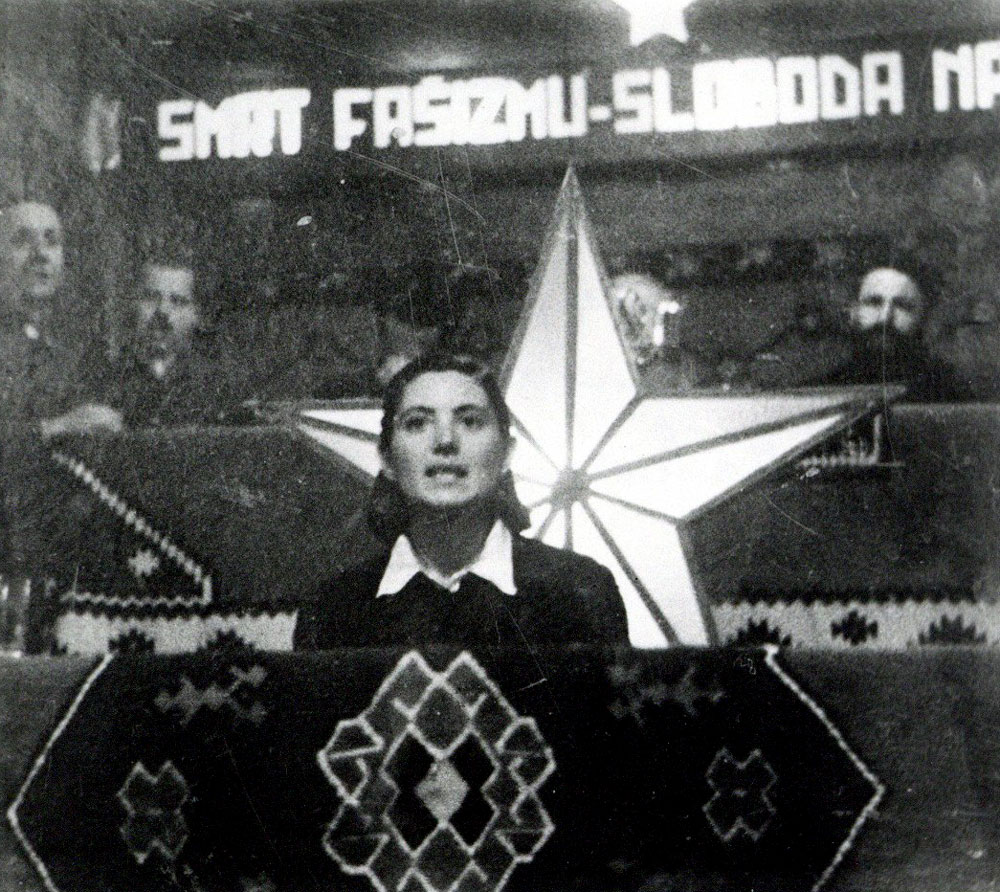A young woman with an impeccably clean white collar – Rada Vranješević
The session of ZAVNOBIH in the town of Mrkonjić on November 25, 1943, was immortalized by a photograph of a young woman, with an impeccably clean white collar, confidently addressing the delegates from the stage. It was Rada Vranješević, whose photo gained cult status, but the fact is that only a few know her name or more about her life.
“There is this little Rada”, the students of the teachers’ school in Banja Luka used to say among themselves in the 1930s. Already in her high school days, she was brought into contact with leftist ideas. Her engagement and sensitivity to social injustice and poverty led to her being kicked out of school. The beginning of the war brings her back to her homeland, where she begins her work in occupied Banja Luka. Her more active involvement in the political organisation of women within the Anti-Fascist Women’s Front (AFŽ) begins with her transfer to the free territory. Working in party organisations and as a member of the AFŽ Central Committee, Rada did not reconcile herself to dealing with the “women’s sector”, stressing that “women are not a separate sector, they fight with the entire nation”. She was particularly interested in social problems, housing refugees and their care. Her work at AFŽ brought her to the town of Mrkonjić a few days before the session of ZAVNOBIH, participating in its preparations. Vera Babić had the opportunity to meet Rada during those preparations, and she described seeing “A beautiful friend, measured in her gestures, moved quietly around that large room… She had such a sense for organisation!”.
At the session itself, Rada, as a representative of women and AFŽ Krajina, addressed the delegates and pointed out that women “will continue to fight against the occupiers”, and that after the liberation of the country “they will invest all their strength in building a happy future for our Bosnia and Herzegovina within the framework of federal Yugoslavia”. Exactly six months later, on May 25, 1944, she was captured by German soldiers in the raid on Drvar. “Halt! Halt! We saw a slender woman running down the hill with all her strength,” Mileva Vidović recalled. The last act of resistance was an attempt to escape – she didn’t succeed.
Nedim Pustahija


